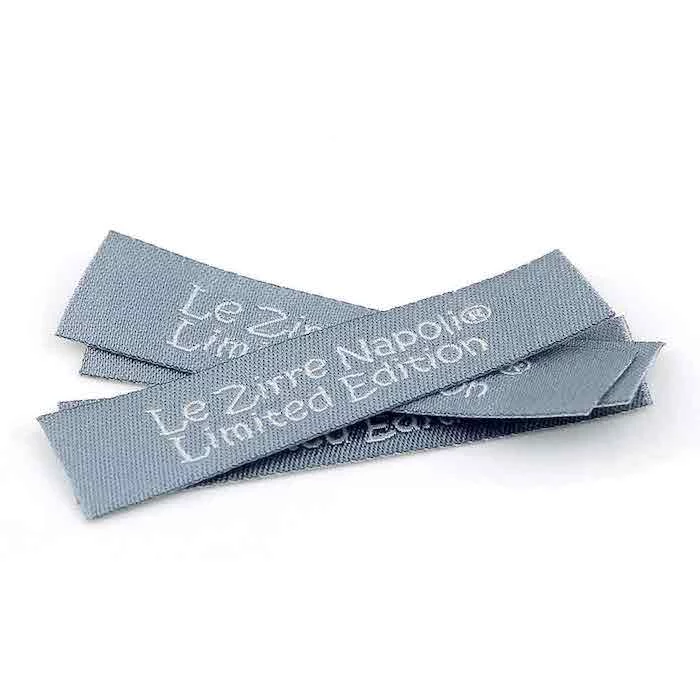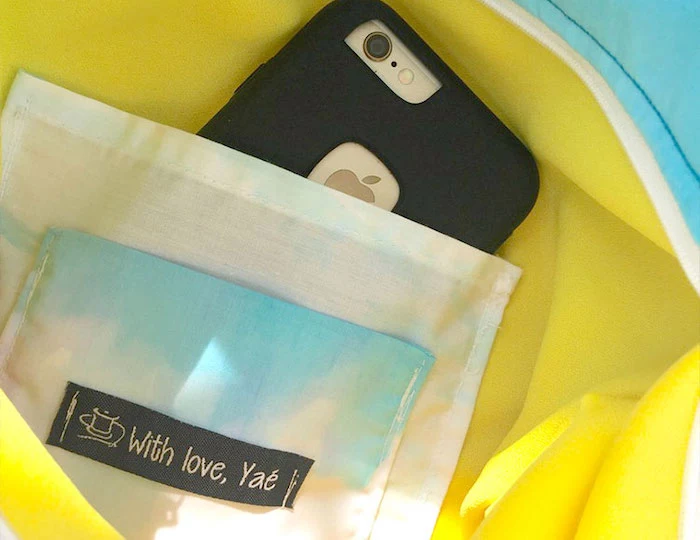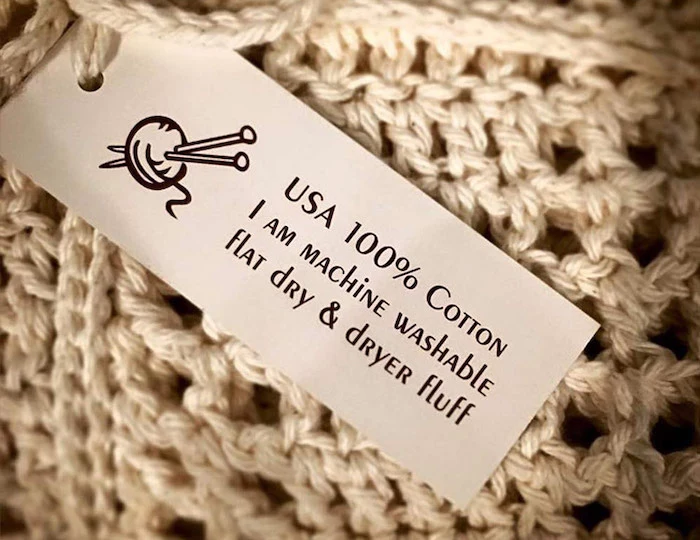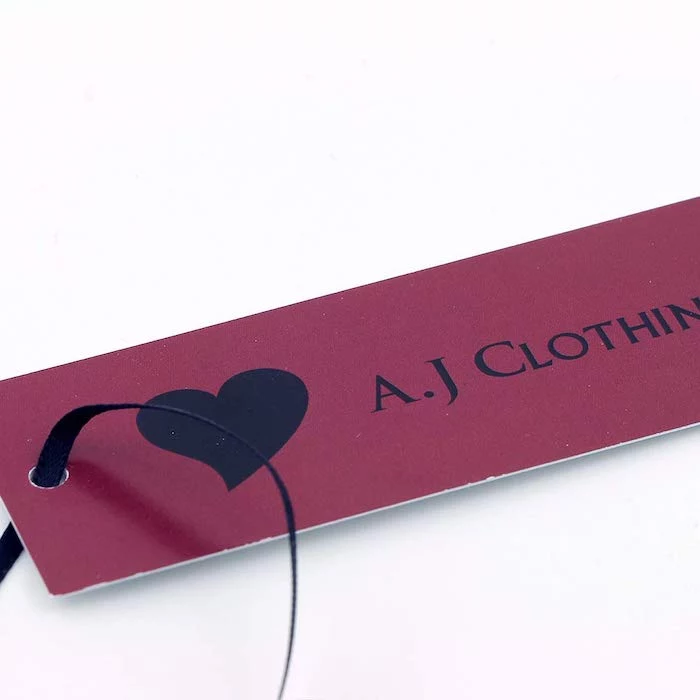Clothing Labels 101: Don’t Let a Tiny Tag Ruin Your Brand
I’ve been in the apparel game for a long time, and I’ve seen it happen more times than I can count: a gorgeous garment, totally sabotaged by one tiny detail—the label. A scratchy, poorly made tag can make a premium shirt feel cheap. It can literally irritate your customers and leave a bad taste in their mouth. But a soft, well-designed label? That’s different. It whispers quality and shows you care about every last detail, even the part they might eventually cut off.
In this article
Think of your clothing label as more than just a piece of fabric with your name on it. It’s your brand’s handshake with the customer. It’s also a legal document that has to play by some pretty strict rules. Getting this right from the start saves you a world of headaches, money, and protects the reputation you’re working so hard to build.
What Labels Do You Actually Need?
Most people just picture a single brand tag, but a finished piece of clothing usually has a few different labels, each with its own job. Knowing the difference helps you make smarter choices.

1. The Main Brand Label
This is your signature, the one with your logo and brand name. It’s all about recognition. You’ve got two main paths to go down here: woven or printed. And trust me, the choice says a lot about your brand.
- Woven Labels: These are the gold standard for a professional look. Threads are literally woven together on a loom to create your design, so they feel substantial and last forever. For a decent run of about 500-1000 pieces, you can expect to pay somewhere between $0.15 and $0.40 per label, depending on complexity.
- Printed Labels: Here, the design is printed onto a ribbon of material like satin or cotton. They’re great for super intricate logos with sharp details. The downside? The print can fade after a lot of washes. A popular sub-category is the heat transfer label—the “tagless” kind you iron on.
Honestly, I almost always push for woven labels for the main branding. The only big exception is for activewear or kids’ clothes, where a tagless heat transfer is way more comfortable.

2. The Care & Content Label
This is the one the law cares about most. It has to tell the customer exactly what the item is made of and how to wash it without ruining it. In the United States, the Federal Trade Commission (FTC) doesn’t mess around with this. This label needs to include:
- Fiber Content: The breakdown of materials by percentage (e.g., 80% Cotton / 20% Polyester).
- Country of Origin: Where the product was made (e.g., Made in Vietnam).
- Care Instructions: Clear directions for washing, drying, and ironing, often using universal symbols.
Quick tip: We often sew this one into a side seam. It keeps it out of the way of the customer’s neck but is still easy to find when they need it.
3. The Size Label
This one’s straightforward—it just shows the size (S, M, L, etc.). It can be a tiny, separate tab or you can build it right into your main brand label. For new brands trying to save a buck, buying pre-made size tabs is a fantastic shortcut. You can get a roll of 500 “M” tabs for about $15 online.

Let’s Talk Materials: What Your Labels Are Actually Made Of
The material you pick impacts the feel, the durability, and the cost. This is where you need to match the label to the quality of your garment. You wouldn’t put cheap tires on a sports car, right? Same idea.
Woven Label Materials: The Pro’s Choice
Woven labels are typically made from polyester threads. The quality really comes down to how fine those threads are and the way they’re woven together.
- Damask: This is the top-shelf option. Damask uses finer threads, which allows for amazing detail and a soft, smooth hand-feel. If your logo has small text or intricate lines, you’ll want to go with damask. It just feels premium. It’s on the higher end of the woven price range, maybe closer to $0.30 to $0.50 per piece, but the quality jump is obvious.
- Satin: Woven satin labels are incredibly soft with a distinct sheen, making them perfect for lingerie, baby clothes, or anything that sits close to sensitive skin. The main drawback is that they aren’t quite as tough as damask and logos can look a little less sharp against the looser weave.
- Taffeta: This is the most basic, entry-level woven label. It’s a bit stiffer and you can see the grid-like texture from the thicker threads. To be frank, I usually advise against using taffeta for a main brand label. It can feel scratchy and cheapens the whole garment.

Printed Label Materials: Good for a Reason
- Printed Satin: This is what most care labels are made of. It’s super soft and cheap to produce. The big catch is that the ink sits on the surface and can start to fade after 20-30 washes, but for a care label, that’s usually fine.
- Cotton: Printed cotton labels have a wonderful natural, earthy vibe. They’re perfect for organic or heritage-style brands. Because cotton is absorbent, ink can sometimes bleed a tiny bit, making lines less crisp. It’s also a bit pricier than satin.
- Heat Transfer (Tagless) Labels: Instead of a separate tag, this is an ink-based design applied directly to the fabric with heat. It’s the undisputed champ for t-shirts and performance wear. But be warned: quality varies wildly. I’ve seen cheap ones crack and peel after just a few washes. A good supplier is non-negotiable here.
My go-to test for heat transfers: Get a sample from your supplier, apply it to a scrap of your actual fabric, and wash it 10 times in HOT water. After that, give it a good stretch. Do you see any cracking or peeling? That’s a huge red flag. A quality transfer should stretch with the fabric without breaking apart.

Specialty Materials for a Statement
Sometimes you need to go beyond fabric. Things like leather patches (and their faux-leather cousins) are classics for jeans and outerwear. You can also find tiny metal plates for branding on handbags or silicone/rubber patches for sportswear, which are flexible and totally waterproof.
Designing a Label That Actually Works
A great design on your computer screen doesn’t always translate to a 1-inch woven label. You have to design for the real world.
A classic rookie mistake is creating a logo with incredibly fine lines or tiny, delicate text. You have to remember, a woven label is made of physical threads, not pixels. A thread has a minimum thickness. It’s always better to use a slightly simplified, bolder version of your logo for your labels. On that same note, limit your colors. Each color is a separate thread, and more colors equals more complexity and cost. Two or three colors are usually plenty for a strong, clean design.
And please, don’t just eyeball the colors on your monitor! Screens are backlit (RGB), while threads are physical pigments. To get consistent results, use the Pantone Matching System (PMS). You can give your supplier a PMS code, and they’ll match their thread to it as closely as possible.
Choosing the Right Fold
How a label is folded determines how it’s sewn on. Here are the main types:
- No Fold (Straight Cut): Cut and sealed on all four sides. These can be a bit scratchy, so they’re best for patches that you sew flat on all sides, not where it can poke someone.
- End Fold: Imagine folding the short ends of a rectangle under. This creates clean, soft edges. The label is then sewn down on those two folded ends. Great for the outside hem of a shirt.
- Center Fold: Simple. It’s folded in half like a taco. This is the most common fold for neck labels. Your logo goes on the front, and you can put care info on the back.
- Miter Fold: This one’s a bit fancier. The ends are folded up and inward, creating little “wings” that you can sew into a seam to make a small hanging loop.
Oh yeah, another common pitfall: forgetting about seam allowance! Don’t place your logo right at the edge of a center-fold label, or half of it will get swallowed by the seam when it’s sewn in. Give it some breathing room.
The Boring (But Super Important) Legal Stuff
Okay, let’s get serious for a moment. This part isn’t glamorous, but getting it wrong can get your products seized at the border or lead to big fines. These rules are not optional. (Heads up: I’m an apparel pro, not a lawyer. This is industry-standard info, but you should always consult a legal expert to be 100% sure.)
In the US, the FTC requires that your labels state the following clearly, and the label itself must last for the life of the garment:
- Fiber Content: List the generic fiber names and their percentages by weight, from most to least.
- Country of Origin: You have to state where the garment was manufactured. These rules can be surprisingly complex, so double-check them.
- Manufacturer Identity: You need to identify your company. I strongly, strongly recommend getting a free Registered Identification Number (RN) from the FTC. Just search for the “FTC RN Number application” online. It’s a simple process, and it lets you use your RN instead of your full business name and address, which protects your privacy and looks much cleaner.
And if you make anything for children under 12, STOP. You must comply with the Consumer Product Safety Improvement Act (CPSIA). This is a massive deal. All your components, including the labels, have to be tested by a third-party lab for things like lead. I once saw a small brand almost go under because their shipment was held at customs for a CPSIA violation. Don’t take it lightly.
Okay, So Where Do You Actually Buy These Things?
Once your design is ready, you need a supplier. For large orders where cost-per-piece is the main driver, many brands look to overseas suppliers on platforms like Alibaba. The quality can be excellent, but be ready for longer shipping times and higher Minimum Order Quantities (MOQs)—we’re talking 500 or even 1000 labels minimum. For smaller brands, faster turnarounds, or more direct communication, domestic suppliers are a great choice. Check out places like Dutch Label Shop online. For really tiny, craft-level batches, you can even find great sellers on Etsy who might do a run of just 50 or 100 labels.
But here is the single most important piece of advice I can give you: NEVER, EVER place a bulk order for labels without getting a physical sample first. I cannot stress this enough. A digital proof is not the same thing. Expect a custom sample to cost you between $20 and $50, but here’s the kicker: most good suppliers will credit that cost back to you when you place the full order. It is the best insurance policy you can buy for your brand.
So, before you hit ‘send’ on that email to a supplier, get your ducks in a row. Have your finalized vector logo file (an .ai or .eps is best), your Pantone color codes, the exact dimensions, the fold type confirmed, and all that legal info ready to go. Walking in prepared shows you’re a pro and gets the whole process started on the right foot.
Inspirational Gallery
High-Definition Damask: The top choice for intricate logos and luxury branding. Tightly woven with finer threads, it delivers a smooth, soft finish and exceptionally sharp detail. Ideal for any garment where the label comes into contact with the skin.
Economical Taffeta: A more budget-friendly option with a less dense weave, which can feel a bit stiffer. It’s best suited for simpler, bold logos and is often used for outer branding on jackets, bags, or other items where softness isn’t the primary concern.
Under the U.S. Textile Fiber Products Identification Act, the country of origin must be clearly stated on a label, and for most garments, it must be attached to the neck area.
Thinking green? Your labels can make a powerful sustainability statement. Today’s suppliers offer incredible eco-friendly options that don’t compromise on quality.
- Recycled Polyester: Many woven labels, like those from a supplier like Dutch Label Shop, can be made from 100% recycled polyester yarn, often derived from PET bottles.
- Organic Cotton: For a soft, natural feel, printed labels on GOTS-certified organic cotton are perfect for children’s clothing or brands with an earthy aesthetic.
- Water-Based Inks: For printed labels, ensure your manufacturer uses water-based or soy-based inks, which are far less polluting than traditional plastisol inks.
Can I put a QR code on my clothing label?
Absolutely, and it’s a growing trend. A small, crisp QR code on a care label can link customers to a webpage with video tutorials on washing a delicate garment, share the story of the product’s origin, or even offer an exclusive discount on their next purchase. It transforms a static piece of fabric into an interactive gateway to your brand’s world.
Consider using the back of your main brand label for a ‘secret’ touch. A simple ‘Made with passion in [Your City]’ or a playful ‘You look great today’ can create a moment of delight for your customer, turning a functional item into a memorable brand experience.
- They prevent fraying, even after dozens of washes.
- They provide a perfectly clean, flat application on a garment’s surface.
- They are ideal for placing on a sleeve cuff, pocket, or the bottom hem.
The secret? Ask your supplier for an ‘end fold’ or ‘mitre fold’ label. The short ends are pre-folded under, creating clean edges that are easy to stitch down for a premium, patch-like appearance.
A study by the consulting firm CGS found that nearly 40% of consumers would pay more for a product if they could be assured of its sustainability.
This is where your label does more than state the size. Using a tag made from recycled materials or organic cotton, and clearly (but subtly) indicating it, reinforces your brand’s values. It’s a small detail that helps justify a premium price point in the mind of the conscious consumer.
The #1 rookie mistake: Forgetting about seam allowance. A ‘center fold’ label that’s meant to be looped and sewn into a collar seam needs at least a 5mm allowance at the top. If your logo is too high, it will get lost in the stitching. Always check your manufacturer’s template for the ‘safe zone’ before finalizing your design.
Before you hit ‘confirm’ on that 1,000-piece label order, run through this quick pre-flight check:
- Is the font legible at the final, tiny size? A fancy script might look great on screen but become an unreadable smudge when woven.
- Have you converted all text to outlines/paths in your Illustrator or vector file?
- Does the color code (e.g., Pantone) match your brand guidelines exactly?
Look no further than Levi’s iconic Red Tab for inspiration on turning a label into a legend. Patented in 1936, this tiny piece of folded satin ribbon, often just showing the brand name, is placed on the outside of the pocket. It’s not just identification; it’s a fiercely protected design element that screams authenticity from across the room.










